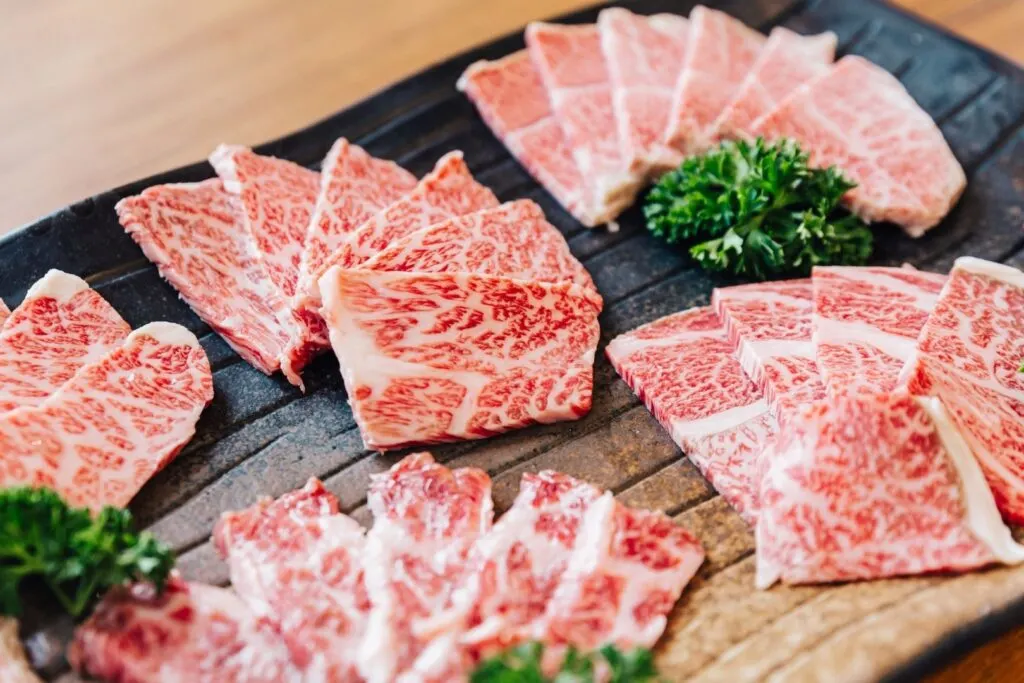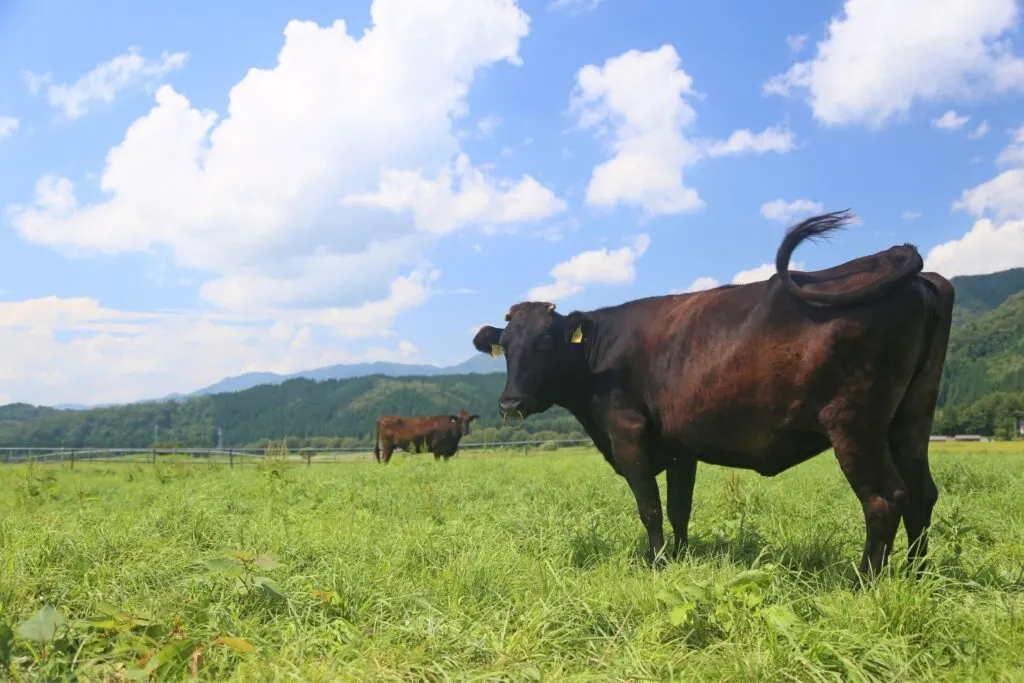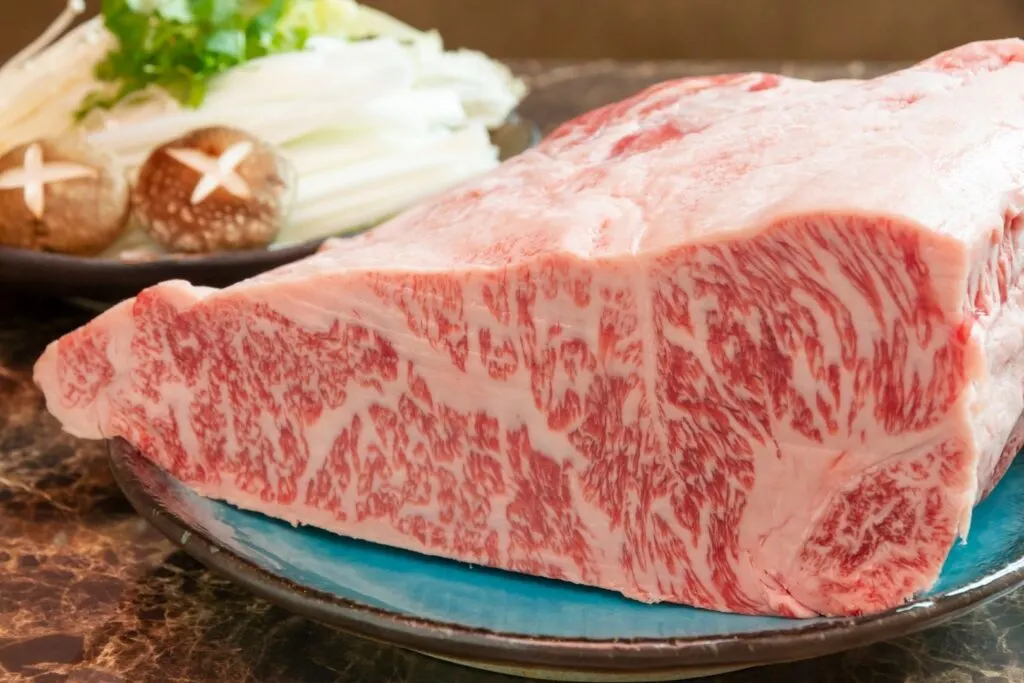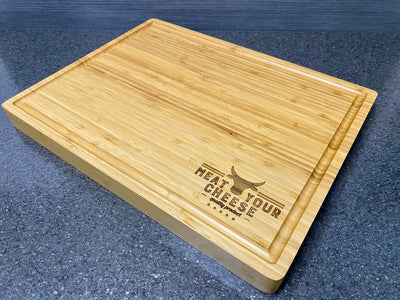What is A5 Wagyu Beef?
If you like meat, your going to love A5 wagyu, the most delicious Japanese beef with the highest levels of marbling that causes the meat to almost melt in your mouth.
Most people know the term, but just what is A5 wagyu beef? What are the wagyu grades?
Let me break it down for you.
Most people know the term, but just what is A5 wagyu beef? What are the wagyu grades?
Let me break it down for you.

What is Wagyu?
Wagyu means Japanese cow or cattle. This is a term that is used to refer to meat from Japanese breeds.
Wagyu cows are classified into four breeds – Japanese Black, Japanese Brown, Japanese Poll, and Japanese Shorthorn.
Wagyu cows are classified into four breeds – Japanese Black, Japanese Brown, Japanese Poll, and Japanese Shorthorn.
The vast majority in Japan comes from the Japanese Black breed, which is known for its superior marbling. The melt in your mouth experience that Japanese wagyu is so renowned for is a culinary delight.
 The Japanese Black breed is renowned for its superior marbling.
The Japanese Black breed is renowned for its superior marbling.
How is Wagyu Graded?
The wagyu grade system uses a combination of letters and numbers and is used to rate the quality of Japanese beef. Information on the grades of wagyu being served should be either available on the menu or by asking the server or chef.
Wagyu is given a letter grade (A through C) for yield and a number grade (1 through 5) for quality.
Quality scores are taken extremely seriously and are done by no less than three independent highly-trained assessors, whose scores are combined to establish a final grade.
Here’s what you need to know about wagyu grading.
Wagyu is given a letter grade (A through C) for yield and a number grade (1 through 5) for quality.
Quality scores are taken extremely seriously and are done by no less than three independent highly-trained assessors, whose scores are combined to establish a final grade.
Here’s what you need to know about wagyu grading.
Yield grade determines the cut of the meat that can be obtained from a certain part of the cow’s carcass.
Grade A : Above standard
Grade B : Standard
Grade C : Below standard
Grade B : Standard
Grade C : Below standard
Quality grade
Wagyu beef quality is determined by evaluating four different categories:
- the thin strips or flecks of fat known as marbling;
- the color and brightness of the beef;
- firmness and texture;
- and the color, luster and quality of the fat.
The beef is assigned a number grade from 1-5 for each of the categories.
5: Excellent
4: Good
3: Average
2: Below average
1: Poor
Therefore, taking the best score from each category, the best wagyu grade that can be obtained is Wagyu A5 and there are three major cuts:
4: Good
3: Average
2: Below average
1: Poor
Therefore, taking the best score from each category, the best wagyu grade that can be obtained is Wagyu A5 and there are three major cuts:
Japanese beef must grade at the same level across all quality criteria to be given that status. For example, beef that is assessed as A for yield and 5 across three of the four quality measurements, and 4 for one, can only be given a score of A4. Therefore, you can be guaranteed that anything rated as A5 wagyu is of extremely high quality in all areas.

What’s better than A5 wagyu?
The A5 Wagyu 12 is the king!
Within the marbling category, there is additional grading based on the Beef Marble Score (BMS). The BMS allows the distinct marbling of the beef to be graded to an even finer degree of accuracy, and is given a number grade of 1-12.
This shows just how important marbling is to the quality of wagyu and the overall experience of eating high-quality Japanese meat.
The grading of wagyu marbling is as follows:
Grade BMS No.
BMS 5: Excellent 8 – 12
BMS 4: Good 5 – 7
BMS 3: Average 3 – 4
BMS 2: Below average 2
BMS 1: Poor 1
Therefore once BMS is factored in, the actual highest grade of wagyu is A5 12!
While a very small number of pure-bred Japanese cattle exist in the US, meat need only be 46.9% Japanese to be labeled wagyu. Typically wagyu in the United States is cross-bred with Angus cattle and may be more Angus beef than wagyu.
However, even this very broad definition of wagyu only applies to farmers and abattoirs; it does not extend to restaurants. So essentially restaurants can sell any beef as wagyu and many do.
Eating wagyu in Japan versus America, for example, or Australia, where wagyu breeds are usually cross-bred with domestic Angus cattle as well, is a different experience, not only because of pure-bred versus cross-bred cattle; the climate, environment, rearing techniques and the feed the animals consume all impact texture, taste and marbling.
The strict grading system described above only applies to wagyu in Japan and the vast majority of it remains in-country for domestic consumption. Wagyu reared in Japan reaches such a high quality that the American and Australian grading systems don’t have categories for such extensive marbling.
The USDA only recognizes beef up to ‘Prime,’ which equates to about 4 on the BMS scale (considered ‘average’ in Japan) and Australia’s own AUS-MEAT marbling system only goes up to an equivalent of BMS 9 (9+ is the maximum and is designated to anything that is considered above a 9).
Have you ever tried A5 wagyu or any other grades of Japanese beef? Where did you try it and what did you think of it?
Within the marbling category, there is additional grading based on the Beef Marble Score (BMS). The BMS allows the distinct marbling of the beef to be graded to an even finer degree of accuracy, and is given a number grade of 1-12.
This shows just how important marbling is to the quality of wagyu and the overall experience of eating high-quality Japanese meat.
The grading of wagyu marbling is as follows:
Grade BMS No.
BMS 5: Excellent 8 – 12
BMS 4: Good 5 – 7
BMS 3: Average 3 – 4
BMS 2: Below average 2
BMS 1: Poor 1
Therefore once BMS is factored in, the actual highest grade of wagyu is A5 12!
While a very small number of pure-bred Japanese cattle exist in the US, meat need only be 46.9% Japanese to be labeled wagyu. Typically wagyu in the United States is cross-bred with Angus cattle and may be more Angus beef than wagyu.
However, even this very broad definition of wagyu only applies to farmers and abattoirs; it does not extend to restaurants. So essentially restaurants can sell any beef as wagyu and many do.
Eating wagyu in Japan versus America, for example, or Australia, where wagyu breeds are usually cross-bred with domestic Angus cattle as well, is a different experience, not only because of pure-bred versus cross-bred cattle; the climate, environment, rearing techniques and the feed the animals consume all impact texture, taste and marbling.
The strict grading system described above only applies to wagyu in Japan and the vast majority of it remains in-country for domestic consumption. Wagyu reared in Japan reaches such a high quality that the American and Australian grading systems don’t have categories for such extensive marbling.
The USDA only recognizes beef up to ‘Prime,’ which equates to about 4 on the BMS scale (considered ‘average’ in Japan) and Australia’s own AUS-MEAT marbling system only goes up to an equivalent of BMS 9 (9+ is the maximum and is designated to anything that is considered above a 9).
Have you ever tried A5 wagyu or any other grades of Japanese beef? Where did you try it and what did you think of it?
More from:
A5 Wagyu




